Lunes
Eventos economicos
Condiciones del mercado laboral
Subasta de bonos
Entre los eventos mas importantes de la semana tenemos el indice del optimismo de los pequenios negocios y el comercio de mayoristas; el reporte del petroleo el Miercoles; los seguros de desempleo y el indice del confort del consumidor el Jueves; las ventas retail, los precios de los importadores y exportadores, los inventarios de negocios y el sentimiento del consumidor el Viernes.
Labor Market Conditions Index
[Bullet10:00 AM ET
4-Week Bill Announcement
11:00 AM ET
3-Month Bill Auction
11:30 AM ET
6-Month Bill Auction
11:30 AM ET
TD Ameritrade IMX
[Bullet12:30 PM ET
NFIB Small Business Optimism Index
[Report][Bullet6:00 AM ET
Redbook
[Bullet8:55 AM ET
JOLTS
[djStar]10:00 AM ET
Wholesale Trade
[Report][Bullet10:00 AM ET
4-Week Bill Auction
11:30 AM ET
3-Yr Note Auction
1:00 PM ET
MBA Mortgage Applications
[Bullet7:00 AM ET
Janet Yellen Speaks
10:00 AM ET
EIA Petroleum Status Report
[djStar]10:30 AM ET
10-Yr Note Auction
1:00 PM ET
John Williams Speaks
1:30 PM ET
Treasury Budget
[djStar]2:00 PM ET
Weekly Bill Settlement
Jobless Claims
[Report][Star]8:30 AM ET
Bloomberg Consumer Comfort Index
[Bullet9:45 AM ET
Janet Yellen Speaks
10:00 AM ET
EIA Natural Gas Report
[Bullet10:30 AM ET
3-Month Bill Announcement
11:00 AM ET
6-Month Bill Announcement
11:00 AM ET
30-Yr TIPS Announcement
11:00 AM ET
30-Yr Bond Auction
1:00 PM ET
Fed Balance Sheet
[Bullet4:30 PM ET
Money Supply
[Bullet4:30 PM ET
Retail Sales
[Report][Star]8:30 AM ET
Import and Export Prices
[Report][djStar]8:30 AM ET
Rob Kaplan Speaks
9:45 AM ET
Business Inventories
[Report][djStar]10:00 AM ET
Consumer Sentiment
[Report][djStar]10:00 AM ET
Baker-Hughes Rig Count
[Bullet1:00 PM ET
Lunes 08/02/16 Condiciones del mercado laboral
65 mensajes
• Página 1 de 5 • 1, 2, 3, 4, 5
Re: Lunes 08/02/16 Condiciones del mercado laboral
Futures LAST CHANGE % CHG
See all Futures
Crude Oil 30.97 0.08 0.26%
Brent Crude 34.10 0.04 0.12%
Natural Gas 2.108 0.045 2.18%
Gasoline 0.9930 0.0003 0.03%
Gold 1165.5 7.8 0.67%
Silver 14.925 0.147 0.99%
Corn 365.75 0.00 0.00%
Wheat 466.5 -0.3 -0.05%
E-mini DJIA 16180 49 0.30%
E-mini S&P 500 1882.00 6.75 0.36%
Indexes LAST CHANGE % CHG
Reuters-Jefferies CRB 161.932 -1.521 -0.93%
S&P GSCI 290.49 0.51 0.18%
See all Futures
Crude Oil 30.97 0.08 0.26%
Brent Crude 34.10 0.04 0.12%
Natural Gas 2.108 0.045 2.18%
Gasoline 0.9930 0.0003 0.03%
Gold 1165.5 7.8 0.67%
Silver 14.925 0.147 0.99%
Corn 365.75 0.00 0.00%
Wheat 466.5 -0.3 -0.05%
E-mini DJIA 16180 49 0.30%
E-mini S&P 500 1882.00 6.75 0.36%
Indexes LAST CHANGE % CHG
Reuters-Jefferies CRB 161.932 -1.521 -0.93%
S&P GSCI 290.49 0.51 0.18%
- admin
- Site Admin
- Mensajes: 165586
- Registrado: Mié Abr 21, 2010 9:02 pm
Re: Lunes 08/02/16 Condiciones del mercado laboral
Currencies9:11 PM EST 2/7/2016
LAST(MID) CHANGE
Euro (EUR/USD) 1.1142 -0.0015
Yen (USD/JPY) 117.21 0.34
Pound (GBP/USD) 1.4512 0.0010
Australia $ (AUD/USD) 0.7092 0.0023
Swiss Franc (USD/CHF) 0.9930 0.0023
WSJ Dollar Index 89.88 0.07
Futures9:01 PM EST 2/7/2016
LAST CHANGE % CHG
Crude Oil 30.97 0.08 0.26%
Brent Crude 34.09 0.03 0.09%
Gold 1165.4 7.7 0.67%
Silver 14.925 0.147 0.99%
E-mini DJIA 16180 49 0.30%
E-mini S&P 500 1881.75 6.50 0.35%
Government Bonds9:11 PM EST 2/7/2016
PRICE CHG YIELD
U.S. 10 Year -9/32 1.865
German 10 Year 2/32 0.299
Japan 10 Year -4/32 0.041
LAST(MID) CHANGE
Euro (EUR/USD) 1.1142 -0.0015
Yen (USD/JPY) 117.21 0.34
Pound (GBP/USD) 1.4512 0.0010
Australia $ (AUD/USD) 0.7092 0.0023
Swiss Franc (USD/CHF) 0.9930 0.0023
WSJ Dollar Index 89.88 0.07
Futures9:01 PM EST 2/7/2016
LAST CHANGE % CHG
Crude Oil 30.97 0.08 0.26%
Brent Crude 34.09 0.03 0.09%
Gold 1165.4 7.7 0.67%
Silver 14.925 0.147 0.99%
E-mini DJIA 16180 49 0.30%
E-mini S&P 500 1881.75 6.50 0.35%
Government Bonds9:11 PM EST 2/7/2016
PRICE CHG YIELD
U.S. 10 Year -9/32 1.865
German 10 Year 2/32 0.299
Japan 10 Year -4/32 0.041
- admin
- Site Admin
- Mensajes: 165586
- Registrado: Mié Abr 21, 2010 9:02 pm
Re: Lunes 08/02/16 Condiciones del mercado laboral
LAST CHANGE % CHG
Get index data by Email
Japan: Nikkei 225 16787.21 -32.38 -0.19%
Hang Seng 19288.17 105.08 0.55%
Shanghai Composite 2763.49 -17.53 -0.63%
S&P BSE Sensex 24616.97 278.54 1.14%
Australia: S&P/ASX 4971.30 -4.90 -0.10%
UK: FTSE 100 5848.06 -50.70 -0.86%
DJIA 16204.97 -211.61 -1.29%
Asia Dow 2499.52 -10.85 -0.43%
Global Dow 2137.35 -1.45 -0.07%
Get index data by Email
Japan: Nikkei 225 16787.21 -32.38 -0.19%
Hang Seng 19288.17 105.08 0.55%
Shanghai Composite 2763.49 -17.53 -0.63%
S&P BSE Sensex 24616.97 278.54 1.14%
Australia: S&P/ASX 4971.30 -4.90 -0.10%
UK: FTSE 100 5848.06 -50.70 -0.86%
DJIA 16204.97 -211.61 -1.29%
Asia Dow 2499.52 -10.85 -0.43%
Global Dow 2137.35 -1.45 -0.07%
- admin
- Site Admin
- Mensajes: 165586
- Registrado: Mié Abr 21, 2010 9:02 pm
Re: Lunes 08/02/16 Condiciones del mercado laboral
Copper February 07,20:59
Bid/Ask 2.0840 - 2.0845
Change -0.0127 -0.61%
Low/High 2.0838 - 2.0972
Charts
Nickel February 07,20:58
Bid/Ask 3.6590 - 3.6635
Change -0.0204 -0.55%
Low/High 3.5433 - 3.6817
Charts
Aluminum February 07,20:58
Bid/Ask 0.6807 - 0.6811
Change +0.0025 +0.37%
Low/High 0.6782 - 0.6821
Charts
Zinc February 07,20:50
Bid/Ask 0.7567 - 0.7573
Change -0.0027 -0.36%
Low/High 0.7544 - 0.7601
Charts
Lead February 07,20:50
Bid/Ask 0.8057 - 0.8075
Change -0.0016 -0.20%
Low/High 0.8053 - 0.8132
Bid/Ask 2.0840 - 2.0845
Change -0.0127 -0.61%
Low/High 2.0838 - 2.0972
Charts
Nickel February 07,20:58
Bid/Ask 3.6590 - 3.6635
Change -0.0204 -0.55%
Low/High 3.5433 - 3.6817
Charts
Aluminum February 07,20:58
Bid/Ask 0.6807 - 0.6811
Change +0.0025 +0.37%
Low/High 0.6782 - 0.6821
Charts
Zinc February 07,20:50
Bid/Ask 0.7567 - 0.7573
Change -0.0027 -0.36%
Low/High 0.7544 - 0.7601
Charts
Lead February 07,20:50
Bid/Ask 0.8057 - 0.8075
Change -0.0016 -0.20%
Low/High 0.8053 - 0.8132
- admin
- Site Admin
- Mensajes: 165586
- Registrado: Mié Abr 21, 2010 9:02 pm
Re: Lunes 08/02/16 Condiciones del mercado laboral
Como les gusta la burocracia a estos.
---
Banqueros centrales de Alemania y Francia piden que haya un ministro de Finanzas de la zona euro
domingo 7 de febrero de 2016 17:45 GYT Imprimir [-] Texto [+]
BERLÍN (Reuters) - La zona euro necesita reformas estructurales y una mayor integración, incluyendo un ministro de Finanzas del bloque, para que haya un crecimiento sostenible, escribieron los presidentes de los bancos centrales de Alemania y Francia en un diario alemán.
En un artículo publicado en la edición del lunes del Sueddeutsche Zeitung titulado "Europa en una encrucijada", los funcionarios sostuvieron que el Banco Central Europeo (BCE) no está en posición de lograr un crecimiento sostenible a largo plazo para el bloque de 19 países.
El BCE no ha cumplido con su meta de un 2 por ciento de inflación en los últimos tres años y no parece que pueda volver a ese nivel por un tiempo debido al desplome de los precios del petróleo y el flojo crecimiento económico.
"Pese a que la política monetaria ha hecho mucho por la economía de la zona euro, no puede crear un crecimiento económico sustentable", dijeron el presidente del Bundesbank, Jens Weidmann, y su par del Banco de Francia, Francois Villeroy de Galhau.
La zona euro necesita un programa de reformas estructurales y un mejor marco de política monetaria, destacaron.
La idea de un ministro de este tipo estuvo en la mesa en 2011. En ese momento se necesitaba una mayor coordinación de políticas nacionales tras la crisis económica que forzó a la Unión Europea a llevar adelante rescates por cientos de miles de millones de euros para Grecia, Irlanda y Portugal.
"La asimetría actual entre la soberanía nacional y la solidaridad comunitaria genera un peligro para la estabilidad de nuestra unión monetaria", dijeron los funcionarios.
"Una mayor integración parece ser la forma obvia de restaurar la confianza en la zona euro para favorecer el desarrollo de estrategias conjuntas para las finanzas de los países miembro y lograr reformas que promuevan el crecimiento", agregaron.
---
Banqueros centrales de Alemania y Francia piden que haya un ministro de Finanzas de la zona euro
domingo 7 de febrero de 2016 17:45 GYT Imprimir [-] Texto [+]
BERLÍN (Reuters) - La zona euro necesita reformas estructurales y una mayor integración, incluyendo un ministro de Finanzas del bloque, para que haya un crecimiento sostenible, escribieron los presidentes de los bancos centrales de Alemania y Francia en un diario alemán.
En un artículo publicado en la edición del lunes del Sueddeutsche Zeitung titulado "Europa en una encrucijada", los funcionarios sostuvieron que el Banco Central Europeo (BCE) no está en posición de lograr un crecimiento sostenible a largo plazo para el bloque de 19 países.
El BCE no ha cumplido con su meta de un 2 por ciento de inflación en los últimos tres años y no parece que pueda volver a ese nivel por un tiempo debido al desplome de los precios del petróleo y el flojo crecimiento económico.
"Pese a que la política monetaria ha hecho mucho por la economía de la zona euro, no puede crear un crecimiento económico sustentable", dijeron el presidente del Bundesbank, Jens Weidmann, y su par del Banco de Francia, Francois Villeroy de Galhau.
La zona euro necesita un programa de reformas estructurales y un mejor marco de política monetaria, destacaron.
La idea de un ministro de este tipo estuvo en la mesa en 2011. En ese momento se necesitaba una mayor coordinación de políticas nacionales tras la crisis económica que forzó a la Unión Europea a llevar adelante rescates por cientos de miles de millones de euros para Grecia, Irlanda y Portugal.
"La asimetría actual entre la soberanía nacional y la solidaridad comunitaria genera un peligro para la estabilidad de nuestra unión monetaria", dijeron los funcionarios.
"Una mayor integración parece ser la forma obvia de restaurar la confianza en la zona euro para favorecer el desarrollo de estrategias conjuntas para las finanzas de los países miembro y lograr reformas que promuevan el crecimiento", agregaron.
- admin
- Site Admin
- Mensajes: 165586
- Registrado: Mié Abr 21, 2010 9:02 pm
Re: Lunes 08/02/16 Condiciones del mercado laboral
Zika desanima a muchos estadounidenses a viajar a América Latina: sondeo
domingo 7 de febrero de 2016 10:11 GYT Imprimir [-] Texto [+]
La rápida propagación del virus de Zika está desanimando a muchos estadounidenses a viajar a América Latina y el Caribe, con el 41 por ciento de los que conocen la enfermedad asegurando que es menos probable que visiten esa zona, mostró un sondeo de Reuters/Ipsos. En la imagen, una embarazada se protege con un mosquitero en el Hospital Nacional de la Mujer en San Salvador, El Salvador. 5 febrero 2016. REUTERS/José Cabezas
1 de 1Tamaño Completo
Por Jeffrey Dastin
(Reuters) - La rápida propagación del virus de Zika está desanimando a muchos estadounidenses a viajar a América Latina y el Caribe, con el 41 por ciento de los que conocen la enfermedad asegurando que es menos probable que visiten esa zona, mostró un sondeo de Reuters/Ipsos.
La encuesta es la última muestra de que el virus, supuestamente relacionado con miles de defectos de nacimiento en Brasil, podría reducir las típicas escapadas huyendo del frío en los próximos meses.
Aerolíneas y operadores de cruceros deben reportar aún si ha habido un descenso en las reservas por el Zika, y los analistas minimizaron el impacto que podría tener en sus ingresos la decisión de no viajar de las parejas que pretenden tener hijos.
Pese a todo, el conocimiento del virus propagado por el mosquito Aedes alcanza ya a casi dos tercios de los estadounidenses, según el sondeo, realizado a 1.595 adultos en Estados Unidos entre el 1 y el 5 de febrero. Esa cifra se compara con el 45 por ciento que había oído hablar del Zika en una encuesta de Reuters/Ipsos en enero.
"Estoy intentando quedarme embarazada de forma activa con mi marido, así que estoy un poco preocupada", dijo Erica, una de las encuestadas, que dijo que fue picada por un mosquito durante un viaje en enero a las Islas Vírgenes estadounidenses, donde se reportó al presencia del Zika.
Los Centros para el Control y la Prevención de Enfermedades de Estados Unidos (CDC, por sus siglas en inglés) han aconsejado a las embarazadas que eviten viajar a zonas con un brote activo de Zika, y la Organización Mundial de la Salud (OMS) declaró una emergencia sanitaria mundial por la enfermedad.
Erica, que pidió ser identificada solo por su primer nombre por razones personales, aseguró que ya no viajará a Jamaica este verano para celebrar su aniversario de bodas. "Definitivamente hemos dado marcha atrás en eso", afirmó, en referencia a la isla, que está en la lista de advertencia de los CDC.
De los conocedores del virus, el 41 por ciento indicó que es menos probable que viajen a Puerto Rico, México o Sudamérica en los 12 próximos meses a causa del Zika, según el sondeo. Cerca del 48 por ciento señaló que el Zika no alteró la posibilidad de que acudan a esos destinos, mientras el resto no sabía.
Seis de cada diez estadounidenses conocedores del Zika dijeron que el virus les preocupa, incluido un 18 por ciento que comentó que están muy preocupados, mostró la encuesta.
"Es contagioso y es nuevo", dijo la encuestada Toni Brockington, de 42 años, que vive cerca de Fort Bragg, California, y pensaba visitar México antes de enterarse de la existencia del brote. "El virus, junto con los reportes de violencia y drogas y secuestros de turistas, lo están haciendo cada vez menos atractivo", agregó.
(Reporte de Jeffrey Dastin en Nueva York; ed
domingo 7 de febrero de 2016 10:11 GYT Imprimir [-] Texto [+]
La rápida propagación del virus de Zika está desanimando a muchos estadounidenses a viajar a América Latina y el Caribe, con el 41 por ciento de los que conocen la enfermedad asegurando que es menos probable que visiten esa zona, mostró un sondeo de Reuters/Ipsos. En la imagen, una embarazada se protege con un mosquitero en el Hospital Nacional de la Mujer en San Salvador, El Salvador. 5 febrero 2016. REUTERS/José Cabezas
1 de 1Tamaño Completo
Por Jeffrey Dastin
(Reuters) - La rápida propagación del virus de Zika está desanimando a muchos estadounidenses a viajar a América Latina y el Caribe, con el 41 por ciento de los que conocen la enfermedad asegurando que es menos probable que visiten esa zona, mostró un sondeo de Reuters/Ipsos.
La encuesta es la última muestra de que el virus, supuestamente relacionado con miles de defectos de nacimiento en Brasil, podría reducir las típicas escapadas huyendo del frío en los próximos meses.
Aerolíneas y operadores de cruceros deben reportar aún si ha habido un descenso en las reservas por el Zika, y los analistas minimizaron el impacto que podría tener en sus ingresos la decisión de no viajar de las parejas que pretenden tener hijos.
Pese a todo, el conocimiento del virus propagado por el mosquito Aedes alcanza ya a casi dos tercios de los estadounidenses, según el sondeo, realizado a 1.595 adultos en Estados Unidos entre el 1 y el 5 de febrero. Esa cifra se compara con el 45 por ciento que había oído hablar del Zika en una encuesta de Reuters/Ipsos en enero.
"Estoy intentando quedarme embarazada de forma activa con mi marido, así que estoy un poco preocupada", dijo Erica, una de las encuestadas, que dijo que fue picada por un mosquito durante un viaje en enero a las Islas Vírgenes estadounidenses, donde se reportó al presencia del Zika.
Los Centros para el Control y la Prevención de Enfermedades de Estados Unidos (CDC, por sus siglas en inglés) han aconsejado a las embarazadas que eviten viajar a zonas con un brote activo de Zika, y la Organización Mundial de la Salud (OMS) declaró una emergencia sanitaria mundial por la enfermedad.
Erica, que pidió ser identificada solo por su primer nombre por razones personales, aseguró que ya no viajará a Jamaica este verano para celebrar su aniversario de bodas. "Definitivamente hemos dado marcha atrás en eso", afirmó, en referencia a la isla, que está en la lista de advertencia de los CDC.
De los conocedores del virus, el 41 por ciento indicó que es menos probable que viajen a Puerto Rico, México o Sudamérica en los 12 próximos meses a causa del Zika, según el sondeo. Cerca del 48 por ciento señaló que el Zika no alteró la posibilidad de que acudan a esos destinos, mientras el resto no sabía.
Seis de cada diez estadounidenses conocedores del Zika dijeron que el virus les preocupa, incluido un 18 por ciento que comentó que están muy preocupados, mostró la encuesta.
"Es contagioso y es nuevo", dijo la encuestada Toni Brockington, de 42 años, que vive cerca de Fort Bragg, California, y pensaba visitar México antes de enterarse de la existencia del brote. "El virus, junto con los reportes de violencia y drogas y secuestros de turistas, lo están haciendo cada vez menos atractivo", agregó.
(Reporte de Jeffrey Dastin en Nueva York; ed
- admin
- Site Admin
- Mensajes: 165586
- Registrado: Mié Abr 21, 2010 9:02 pm
Re: Lunes 08/02/16 Condiciones del mercado laboral
Lanzamiento de cohete por Corea del Norte irrita a vecinos y a EEUU
domingo 7 de febrero de 2016 15:30 GYT Imprimir [-] Texto [+]
Corea del Norte lanzó el domingo lo que denominó como un cohete de larga distancia cargado con un satélite, aunque sus vecinos y Estados Unidos denunciaron que se trató de una prueba de misiles, realizada desafiando las sanciones de la ONU y apenas semanas después de un ensayo nuclear. En la imagen, el líder norcoreano, Kim Jong Un (centro), observa el lanzamiento del cohete al espacio, en una foto hecha pública por Kyodo. 7 febrero 2016. REUTERS/Kyodo
1 de 1Tamaño Completo
Por Ju-min Park y Jack Kim
SEÚL (Reuters) - Corea del Norte lanzó el domingo lo que denominó como un cohete de larga distancia cargado con un satélite, aunque sus vecinos y Estados Unidos denunciaron que se trató de una prueba de misiles, realizada desafiando las sanciones de la ONU y apenas semanas después de un ensayo nuclear.
El Comando Estratégico de Estados Unidos dijo que detectó la entrada de un misil al espacio y el Ejército de Corea del Sur aseguró que el cohete colocó un objeto en órbita.
Pyongyang dijo que el lanzamiento del satélite Kwangmyongsong-4, bautizado en honor al fallecido líder Kim Jong Il, fue un "éxito total" y que está realizando una órbita polar de la Tierra cada 94 minutos. La orden fue dada por su hijo Kim Jong Un, quien se cree tiene 33 años.
El lanzamiento hizo que Seúl y Washington anunciaran que explorarán la posibilidad de desplegar un sistema avanzado de defensa de misiles en Corea del Sur "en la fecha más cercana posible", algo a lo que se oponen tanto China como Rusia. Estos dos países, aliados de Corea del Norte, criticaron el lanzamiento y pidieron cautela.
El Consejo de Seguridad de Naciones Unidas condenó enérgicamente el domingo el lanzamiento de un cohete por parte de Corea del Norte y prometió tomar medidas punitivas, mientras Washington se comprometió a garantizar que el órgano de 15 miembros impone fuertes sanciones a Pyongyang lo antes posible.
"Los miembros del Consejo de Seguridad condenan con fuerza el lanzamiento", dijo a periodistas el embajador de Venezuela, Rafael Darío Ramírez Carreño, quien preside el cuerpo este mes. [nL2N15M0GX]
La agencia estatal de noticias norcoreana facilitó una fotografía fija de un cohete blanco despegando similar a otro anterior. Otra imagen mostró a Kim rodeado de militares celebrando en lo que parece ser un centro de mando.
El cohete despegó alrededor de las 0030 GMT, con una trayectoria hacia el sur, como estaba previsto. La cadena japonesa Fuji Television Network mostró un rastro de luz dirigiéndose hacia el cielo, capturado por una cámara en la frontera de China con Corea del Norte.
La Administración Nacional de Desarrollo Aeroespacial de Corea del Norte calificó el lanzamiento como "un evento que marca una época en el desarrollo de las capacidades del país en ciencia, tecnología, economía y defensa, al ejercer de forma legítima el derecho a usar el espacio con propósitos independientes y pacíficos".
(Reporte adicional de Jee Heun Kahng en SEÚL; Shinichi Saoshiro, Leika Kihara, Nobuhiro Kubo y Olivier Fabre en Tokio; Megha Gopalakrishnan en Pekín; Louis Charbonneau en la ONU; Matt Spetalnick, David Brunnstrom y Paul Simao en Washington y Alexandra Winning en Moscú. Escrito por Tony Munroe, editado en español por Carlos Serrano y Javier Leira)
domingo 7 de febrero de 2016 15:30 GYT Imprimir [-] Texto [+]
Corea del Norte lanzó el domingo lo que denominó como un cohete de larga distancia cargado con un satélite, aunque sus vecinos y Estados Unidos denunciaron que se trató de una prueba de misiles, realizada desafiando las sanciones de la ONU y apenas semanas después de un ensayo nuclear. En la imagen, el líder norcoreano, Kim Jong Un (centro), observa el lanzamiento del cohete al espacio, en una foto hecha pública por Kyodo. 7 febrero 2016. REUTERS/Kyodo
1 de 1Tamaño Completo
Por Ju-min Park y Jack Kim
SEÚL (Reuters) - Corea del Norte lanzó el domingo lo que denominó como un cohete de larga distancia cargado con un satélite, aunque sus vecinos y Estados Unidos denunciaron que se trató de una prueba de misiles, realizada desafiando las sanciones de la ONU y apenas semanas después de un ensayo nuclear.
El Comando Estratégico de Estados Unidos dijo que detectó la entrada de un misil al espacio y el Ejército de Corea del Sur aseguró que el cohete colocó un objeto en órbita.
Pyongyang dijo que el lanzamiento del satélite Kwangmyongsong-4, bautizado en honor al fallecido líder Kim Jong Il, fue un "éxito total" y que está realizando una órbita polar de la Tierra cada 94 minutos. La orden fue dada por su hijo Kim Jong Un, quien se cree tiene 33 años.
El lanzamiento hizo que Seúl y Washington anunciaran que explorarán la posibilidad de desplegar un sistema avanzado de defensa de misiles en Corea del Sur "en la fecha más cercana posible", algo a lo que se oponen tanto China como Rusia. Estos dos países, aliados de Corea del Norte, criticaron el lanzamiento y pidieron cautela.
El Consejo de Seguridad de Naciones Unidas condenó enérgicamente el domingo el lanzamiento de un cohete por parte de Corea del Norte y prometió tomar medidas punitivas, mientras Washington se comprometió a garantizar que el órgano de 15 miembros impone fuertes sanciones a Pyongyang lo antes posible.
"Los miembros del Consejo de Seguridad condenan con fuerza el lanzamiento", dijo a periodistas el embajador de Venezuela, Rafael Darío Ramírez Carreño, quien preside el cuerpo este mes. [nL2N15M0GX]
La agencia estatal de noticias norcoreana facilitó una fotografía fija de un cohete blanco despegando similar a otro anterior. Otra imagen mostró a Kim rodeado de militares celebrando en lo que parece ser un centro de mando.
El cohete despegó alrededor de las 0030 GMT, con una trayectoria hacia el sur, como estaba previsto. La cadena japonesa Fuji Television Network mostró un rastro de luz dirigiéndose hacia el cielo, capturado por una cámara en la frontera de China con Corea del Norte.
La Administración Nacional de Desarrollo Aeroespacial de Corea del Norte calificó el lanzamiento como "un evento que marca una época en el desarrollo de las capacidades del país en ciencia, tecnología, economía y defensa, al ejercer de forma legítima el derecho a usar el espacio con propósitos independientes y pacíficos".
(Reporte adicional de Jee Heun Kahng en SEÚL; Shinichi Saoshiro, Leika Kihara, Nobuhiro Kubo y Olivier Fabre en Tokio; Megha Gopalakrishnan en Pekín; Louis Charbonneau en la ONU; Matt Spetalnick, David Brunnstrom y Paul Simao en Washington y Alexandra Winning en Moscú. Escrito por Tony Munroe, editado en español por Carlos Serrano y Javier Leira)
- admin
- Site Admin
- Mensajes: 165586
- Registrado: Mié Abr 21, 2010 9:02 pm
Re: Lunes 08/02/16 Condiciones del mercado laboral
Consejo Seguridad ONU condena lanzamiento de cohete de Corea del Norte, promete medidas
domingo 7 de febrero de 2016 15:12 GYT Imprimir [-] Texto [+]
El Consejo de Seguridad de Naciones Unidas inició el domingo una reunión de emergencia para discutir el lanzamiento de un cohete por parte de Corea del Norte, mientras que diplomáticos dijeron que esperan que el organismo de 15 naciones condene a Pyongyang y redoble los esfuerzos por acordar nuevas sanciones. En la imagen, una persona pasa junto a una televisión en una estación de trenes de Seúl, Corea del Sur, con información sobre el lanzamiento de un cohete por parte de Corea de Norte. 7 febrero 2016. REUTERS/Kim Hong-Ji
1 de 1Tamaño Completo
Por Louis Charbonneau
NACIONES UNIDAS (Reuters) - El Consejo de Seguridad de Naciones Unidas condenó enérgicamente el domingo el lanzamiento de un cohete por parte de Corea del Norte y prometió tomar medidas punitivas, mientras Washington se comprometió a garantizar que el órgano de 15 miembros impone fuertes sanciones a Pyongyang lo antes posible.
"Los miembros del Consejo de Seguridad condenan con fuerza el lanzamiento", dijo a periodistas el embajador de Venezuela, Rafael Darío Ramírez Carreño, quien preside el cuerpo este mes.
El diplomático agregó que se trata de una "grave violación" y que el Consejo buscará "imponer medidas severas en una nueva resolución en respuesta al ensayo nuclear" de enero y al lanzamiento del domingo. Destacó que se trabajará "de forma expedita" en el asunto.
En tanto, la embajadora estadounidense, Samantha Power, dijo: "Esta nueva trasgresión de Corea del Norte requiere que nuestra respuesta sea muy firme".
Estados Unidos y China comenzaron a discutir una resolución para ampliar las sanciones existentes de la ONU tras la prueba nuclear de Pyongyang del 6 de enero. Power dijo que espera que el Consejo tenga un borrador de resolución para que sea sometido a votación "lo antes posible". "Es urgente y estamos atrasados", aseguró.
"Esperamos que China, al igual que el resto de los miembros del Consejo, vea la grave amenaza a la paz y seguridad regional e internacional, y la importancia de tomar medidas duras y sin precedentes", señaló.
Diplomáticos indicaron que Washington está consultando en detalle con Japón, Corea del Sur, Gran Bretaña y Francia sus discusiones con China, mientras que Pekín mantiene un contacto estrecho con Rusia, con quien comparte derecho de veto.
En declaraciones en condición de anonimato, un alto diplomático occidental dijo que espera que el Consejo pueda votar este mes una nueva ronda de sanciones.
El secretario de Exteriores británico, Philip Hammond, dijo antes de la reunión que conversó con su par japonés, Fumio Kishida, y que ambos acordaron que el Consejo debe adoptar medidas enérgicas contra Corea del Norte.
El secretario general de Naciones Unidas, Ban Ki-moon, condenó con fuerza el sábado el lanzamiento norcoreano e instó al país a "detener sus acciones provocadoras".
(Reporte de Michelle Nichols e
domingo 7 de febrero de 2016 15:12 GYT Imprimir [-] Texto [+]
El Consejo de Seguridad de Naciones Unidas inició el domingo una reunión de emergencia para discutir el lanzamiento de un cohete por parte de Corea del Norte, mientras que diplomáticos dijeron que esperan que el organismo de 15 naciones condene a Pyongyang y redoble los esfuerzos por acordar nuevas sanciones. En la imagen, una persona pasa junto a una televisión en una estación de trenes de Seúl, Corea del Sur, con información sobre el lanzamiento de un cohete por parte de Corea de Norte. 7 febrero 2016. REUTERS/Kim Hong-Ji
1 de 1Tamaño Completo
Por Louis Charbonneau
NACIONES UNIDAS (Reuters) - El Consejo de Seguridad de Naciones Unidas condenó enérgicamente el domingo el lanzamiento de un cohete por parte de Corea del Norte y prometió tomar medidas punitivas, mientras Washington se comprometió a garantizar que el órgano de 15 miembros impone fuertes sanciones a Pyongyang lo antes posible.
"Los miembros del Consejo de Seguridad condenan con fuerza el lanzamiento", dijo a periodistas el embajador de Venezuela, Rafael Darío Ramírez Carreño, quien preside el cuerpo este mes.
El diplomático agregó que se trata de una "grave violación" y que el Consejo buscará "imponer medidas severas en una nueva resolución en respuesta al ensayo nuclear" de enero y al lanzamiento del domingo. Destacó que se trabajará "de forma expedita" en el asunto.
En tanto, la embajadora estadounidense, Samantha Power, dijo: "Esta nueva trasgresión de Corea del Norte requiere que nuestra respuesta sea muy firme".
Estados Unidos y China comenzaron a discutir una resolución para ampliar las sanciones existentes de la ONU tras la prueba nuclear de Pyongyang del 6 de enero. Power dijo que espera que el Consejo tenga un borrador de resolución para que sea sometido a votación "lo antes posible". "Es urgente y estamos atrasados", aseguró.
"Esperamos que China, al igual que el resto de los miembros del Consejo, vea la grave amenaza a la paz y seguridad regional e internacional, y la importancia de tomar medidas duras y sin precedentes", señaló.
Diplomáticos indicaron que Washington está consultando en detalle con Japón, Corea del Sur, Gran Bretaña y Francia sus discusiones con China, mientras que Pekín mantiene un contacto estrecho con Rusia, con quien comparte derecho de veto.
En declaraciones en condición de anonimato, un alto diplomático occidental dijo que espera que el Consejo pueda votar este mes una nueva ronda de sanciones.
El secretario de Exteriores británico, Philip Hammond, dijo antes de la reunión que conversó con su par japonés, Fumio Kishida, y que ambos acordaron que el Consejo debe adoptar medidas enérgicas contra Corea del Norte.
El secretario general de Naciones Unidas, Ban Ki-moon, condenó con fuerza el sábado el lanzamiento norcoreano e instó al país a "detener sus acciones provocadoras".
(Reporte de Michelle Nichols e
- admin
- Site Admin
- Mensajes: 165586
- Registrado: Mié Abr 21, 2010 9:02 pm
- admin
- Site Admin
- Mensajes: 165586
- Registrado: Mié Abr 21, 2010 9:02 pm
Re: Lunes 08/02/16 Condiciones del mercado laboral
Venezuela Prepares To Liquidate Its Remaining
Gold Holdings To Pay Coming Debt Maturities
Submitted by Tyler D.
02/07/2016 - 20:07
Venezuela's central bank has begun
negotiations with the suddenly troubled
Deutsche Bank to carry out gold swaps "to
improve the liquidity of its foreign reserves as
it faces heavy debt payments this year", payments which it won't be able to fund unless it manages to "liquify" its gold. "One of the sources said the central bank has taken an unspecified amount of gold out of the country so that it can be
certified, which is required for gold that is used in such swaps."
Even The Fed's "Owners" Aren't Buying What Janet
Is Selling
Submitted by Tyler D.
02/07/2016 - 19:20
Despite a collapse in yields and implicit plunge
in the odds of a rate-hike anytime soon, asset-
gathering, commission-taking talking-heads
continue to spew unrealities about the
economy and where it goes next as excuse after excuse (low oil is good, services trump manufacturing etc) are discarded. What is worse is that none other than The Fed's "owners"
- the primary dealers - refuse to play along with The Fed's transitory
narrative as their Treasury Bond position is the longest since 2013.
Catch Up On The Latest Chinese News With These Seven
Bullets Submitted by Tyler Durden on 02/07/2016 21:12 -0500 China Equity Markets Evercore With China offline for the next seven days as its celebrates its Lunar
New Year, here are 7 bullets from Evercore ISI to get everyone up to
speed on the latest developments in the world's most troubled "growth"
economy. Evercore ISI China Weekly Summary No one can remember (and we can't think up) more than 7 bullets on
anything. Here, this week's top China 7. Lunar New Year, Feb 7 - 13. All markets, business and gov't closed the entire week. There will be little news. All on vacation;
many headed home. Jan-Feb data are always fouled up. Beijing says 6.5 - 7.0% is the 2016 Real GDP growth target. In China -- targets 'set' are targets 'met.' But actual economic growth
this rapid -- implausible to us. We have seen a giant rise recently in cheerleading stories in
China's media by many officials - claiming all is OK in the economy, finance and currency. This is jawboning up confidence.
Not convincing to anyone. China's domestic equity markets remain broken. Friday close 2763 -- down 21.9% YTD; down 46.5% since Jun 2015 peak of
(5166). The State is in charge; not investors. The Chinese citizenry can't find enough attractive destinations
for their savings. So, creative new instruments are arriving just in time to fill the vacuum in an environment of -- doubtful regulation,
unsophisticated investors, a weak economy and a leadership elite
with little 'appreciation of' or 'experience with' market forces. CNY is still on a downward path, albeit with interruptions. We are using 6.80/USD year-end 2016; now 6.53/USD. Forex Reserves
Jan, down $99 bln, vs. Dec, down $108 bln. We are not
alarmed. New housing stimulus this last week. A five percentage point reduction in minimum down-payment for both first home and second
home buyers. Small help.
Gold Holdings To Pay Coming Debt Maturities
Submitted by Tyler D.
02/07/2016 - 20:07
Venezuela's central bank has begun
negotiations with the suddenly troubled
Deutsche Bank to carry out gold swaps "to
improve the liquidity of its foreign reserves as
it faces heavy debt payments this year", payments which it won't be able to fund unless it manages to "liquify" its gold. "One of the sources said the central bank has taken an unspecified amount of gold out of the country so that it can be
certified, which is required for gold that is used in such swaps."
Even The Fed's "Owners" Aren't Buying What Janet
Is Selling
Submitted by Tyler D.
02/07/2016 - 19:20
Despite a collapse in yields and implicit plunge
in the odds of a rate-hike anytime soon, asset-
gathering, commission-taking talking-heads
continue to spew unrealities about the
economy and where it goes next as excuse after excuse (low oil is good, services trump manufacturing etc) are discarded. What is worse is that none other than The Fed's "owners"
- the primary dealers - refuse to play along with The Fed's transitory
narrative as their Treasury Bond position is the longest since 2013.
Catch Up On The Latest Chinese News With These Seven
Bullets Submitted by Tyler Durden on 02/07/2016 21:12 -0500 China Equity Markets Evercore With China offline for the next seven days as its celebrates its Lunar
New Year, here are 7 bullets from Evercore ISI to get everyone up to
speed on the latest developments in the world's most troubled "growth"
economy. Evercore ISI China Weekly Summary No one can remember (and we can't think up) more than 7 bullets on
anything. Here, this week's top China 7. Lunar New Year, Feb 7 - 13. All markets, business and gov't closed the entire week. There will be little news. All on vacation;
many headed home. Jan-Feb data are always fouled up. Beijing says 6.5 - 7.0% is the 2016 Real GDP growth target. In China -- targets 'set' are targets 'met.' But actual economic growth
this rapid -- implausible to us. We have seen a giant rise recently in cheerleading stories in
China's media by many officials - claiming all is OK in the economy, finance and currency. This is jawboning up confidence.
Not convincing to anyone. China's domestic equity markets remain broken. Friday close 2763 -- down 21.9% YTD; down 46.5% since Jun 2015 peak of
(5166). The State is in charge; not investors. The Chinese citizenry can't find enough attractive destinations
for their savings. So, creative new instruments are arriving just in time to fill the vacuum in an environment of -- doubtful regulation,
unsophisticated investors, a weak economy and a leadership elite
with little 'appreciation of' or 'experience with' market forces. CNY is still on a downward path, albeit with interruptions. We are using 6.80/USD year-end 2016; now 6.53/USD. Forex Reserves
Jan, down $99 bln, vs. Dec, down $108 bln. We are not
alarmed. New housing stimulus this last week. A five percentage point reduction in minimum down-payment for both first home and second
home buyers. Small help.
- Fenix
- Mensajes: 16351
- Registrado: Vie Abr 23, 2010 2:36 am
Re: Lunes 08/02/16 Condiciones del mercado laboral
2016 EPS Growth Estimates Slashed By 50% Just
One Month Into The Year
Submitted by Tyler D.
02/07/2016 - 15:58
We open it up to readers to determine in how
many weeks will full year 2016 EPS be revised
tom 4.3% as of the start of the year, to 2.2%
currently, to negative, indicating at least 7 consecutive quarters of declining EPS, something not recorded even during the peak of the financial crisis. Incidentally, an earnings recession is two consecutive negative quarters of EPS: we don't know what the
technical term is for seven
The Number Everyone's Been Waiting For: Chinese Reserves
Plunge By $100BN - What Does It Mean For Markets?
Submitted by Tyler Durden on 02/07/2016 17:22 -0500
Bear Market Capital Markets China goldman sachs Goldman Sachs Volatility Yuan As we previewed on Thursday, the biggest event of the week, and perhaps of the month, was not Friday's nonfarm payroll report, but the
January update of China's FX reserves, which the PBOC released last
night. The number came out at $3.2309 trillion, down $99.5 billion from
the prior month, and $8 billion less than the December outflow of $107.6
billion. And even as China added $3.4 billion to its gold reserves, which rose to
$63.6 billion or an increase of half a million ounces to 56.66 million, this
reduced the total amount of Chinese foreign reserves to the lowest level
since May 2012, and down from the $4 trillion peak in the summer of
2014 when the US Dollar started its rapid appreciation on rate hike
concerns, and led to nearly a trillion dollars in Chinese capital outflows. What's Sign up for personalised news updates to help you trade successfully News.Markets Open a Forex Account and Get 60% Bonus on All Deposits. IronFX Recently, an important question that has emerged is for how much
longer can China sustain its FX intervention before tapping out and
letting the hedge funds win with their short Yuan bets once total
reserves drop below the critical redline of approximately $2.7 trillion as
calculated by the IMF - the answer is between 5 months and 10 months
assuming monthly reserve burn rates of $130BN to $60BN. That, however, is a bridge we will cross some time in the summer of
2016. For now the real question is what does the January Chinese FX outflow mean for risk come Monday's open, and how will it affect markets when
they start opening tonight, if not in China which is closed for the week
for its new year celebrations. Recall that in our Thursday preview we warned that according to one of the more prominent bears from BofA, Michael Hartnett, had the reserve
outflow come in well below expected, it would unleash a "vicious bear market rally." This is what we said: That said, keep in mind that BofA itself had a far more optimistic
forecast than consensus: And then there was Goldman, because just as a far smaller than
expected number would be very bullish, so a far greater outflow would
be bearish. According to estimates by Goldman Sachs, not only did
outflows not slow down as dramatically as BofA believes, but they in
fact soared to an all time high $185 billion in January. This is what Goldman said: "There has been around $USD 185bn of
intervention (with the recent intervention predominantly taking place in
the onshore market)" split roughly $143 billion on the domestic side and
$42 billion on the offshore Yuan side." In the last few days, Goldman
actually bumped up this forecast to $197 billion to account for valuation
adjustments. This is how we concluded: The actual number (whether it is fabricated or not, and since this is
China, all bets are on the former) came in at $100 billion, modestly
below the consensus estimate of $120 billion, well below the Goldman
worst case scenario of $197 billion, and well above the BofA "best
case" of 37.5 billion. Or smack in the middle of a Goldilocksian no man's land. What does it mean for markets? Ironically, this may have been the
most unfavorable outcome, because had China admitted the true
severity of its outflows, there would have been a downward flush in
asset prices, after which the market could focus more on fundamentals
and rise from there with the Chinese capital outflow threat no longer
dangling overhead; alternatively, a shockingly small number would have crushed the shorts only to let them re-establish bearish positions after
the initial spike higher. As it stands now, however, what is really happening with the biggest
risk factor to commodity, credit and capital markets, remains a
mystery, and instead of getting some much needed clarity from China's
January reserve number, the world's traders and investors will now have
to wait for the February reserve update one month from now to learn if
China has managed to slay its capital outflow demons, or if these were just getting started. For markets, what this means is that the next month will likely be
market by more of the same sharp, illiquid volatility that has
characterized 2016 so far.
One Month Into The Year
Submitted by Tyler D.
02/07/2016 - 15:58
We open it up to readers to determine in how
many weeks will full year 2016 EPS be revised
tom 4.3% as of the start of the year, to 2.2%
currently, to negative, indicating at least 7 consecutive quarters of declining EPS, something not recorded even during the peak of the financial crisis. Incidentally, an earnings recession is two consecutive negative quarters of EPS: we don't know what the
technical term is for seven
The Number Everyone's Been Waiting For: Chinese Reserves
Plunge By $100BN - What Does It Mean For Markets?
Submitted by Tyler Durden on 02/07/2016 17:22 -0500
Bear Market Capital Markets China goldman sachs Goldman Sachs Volatility Yuan As we previewed on Thursday, the biggest event of the week, and perhaps of the month, was not Friday's nonfarm payroll report, but the
January update of China's FX reserves, which the PBOC released last
night. The number came out at $3.2309 trillion, down $99.5 billion from
the prior month, and $8 billion less than the December outflow of $107.6
billion. And even as China added $3.4 billion to its gold reserves, which rose to
$63.6 billion or an increase of half a million ounces to 56.66 million, this
reduced the total amount of Chinese foreign reserves to the lowest level
since May 2012, and down from the $4 trillion peak in the summer of
2014 when the US Dollar started its rapid appreciation on rate hike
concerns, and led to nearly a trillion dollars in Chinese capital outflows. What's Sign up for personalised news updates to help you trade successfully News.Markets Open a Forex Account and Get 60% Bonus on All Deposits. IronFX Recently, an important question that has emerged is for how much
longer can China sustain its FX intervention before tapping out and
letting the hedge funds win with their short Yuan bets once total
reserves drop below the critical redline of approximately $2.7 trillion as
calculated by the IMF - the answer is between 5 months and 10 months
assuming monthly reserve burn rates of $130BN to $60BN. That, however, is a bridge we will cross some time in the summer of
2016. For now the real question is what does the January Chinese FX outflow mean for risk come Monday's open, and how will it affect markets when
they start opening tonight, if not in China which is closed for the week
for its new year celebrations. Recall that in our Thursday preview we warned that according to one of the more prominent bears from BofA, Michael Hartnett, had the reserve
outflow come in well below expected, it would unleash a "vicious bear market rally." This is what we said: That said, keep in mind that BofA itself had a far more optimistic
forecast than consensus: And then there was Goldman, because just as a far smaller than
expected number would be very bullish, so a far greater outflow would
be bearish. According to estimates by Goldman Sachs, not only did
outflows not slow down as dramatically as BofA believes, but they in
fact soared to an all time high $185 billion in January. This is what Goldman said: "There has been around $USD 185bn of
intervention (with the recent intervention predominantly taking place in
the onshore market)" split roughly $143 billion on the domestic side and
$42 billion on the offshore Yuan side." In the last few days, Goldman
actually bumped up this forecast to $197 billion to account for valuation
adjustments. This is how we concluded: The actual number (whether it is fabricated or not, and since this is
China, all bets are on the former) came in at $100 billion, modestly
below the consensus estimate of $120 billion, well below the Goldman
worst case scenario of $197 billion, and well above the BofA "best
case" of 37.5 billion. Or smack in the middle of a Goldilocksian no man's land. What does it mean for markets? Ironically, this may have been the
most unfavorable outcome, because had China admitted the true
severity of its outflows, there would have been a downward flush in
asset prices, after which the market could focus more on fundamentals
and rise from there with the Chinese capital outflow threat no longer
dangling overhead; alternatively, a shockingly small number would have crushed the shorts only to let them re-establish bearish positions after
the initial spike higher. As it stands now, however, what is really happening with the biggest
risk factor to commodity, credit and capital markets, remains a
mystery, and instead of getting some much needed clarity from China's
January reserve number, the world's traders and investors will now have
to wait for the February reserve update one month from now to learn if
China has managed to slay its capital outflow demons, or if these were just getting started. For markets, what this means is that the next month will likely be
market by more of the same sharp, illiquid volatility that has
characterized 2016 so far.
- Fenix
- Mensajes: 16351
- Registrado: Vie Abr 23, 2010 2:36 am
Re: Lunes 08/02/16 Condiciones del mercado laboral
Google Or Apple, FactSet Asks "Who's Bigger"?
Submitted by Tyler D
02/07/2016 18:00 -0500
Apple Exxon Google On the first day of this month, Google.. er, Alphabet.. turned in an
impressive quarter. Revenues soared 18% Y/Y while Q4 earnings were $8.67/share, well
above the $8.08 the Street was looking for and a whopping $2 more
than Q4 2014. Paid clicks rose by more than a third while FCF rose to
$4.3 for the period. In short, just about everything looked great with the
possible exception of CPC, which dropped 13%. The stock jumped AH and just like that, Alphabet was the world’s most valuable stock, surpassing Apple. As we noted at the time, this happened on the same day that FaceBook blew past Exxon as the third
most valuable stock. “Everything’s working in [Google’s] favor right now,” James Cakmak, an
analyst at Monness Crespi Hardt & Co said. What's Sign up for personalised news updates to help you trade successfully News.Markets Open a Forex Account and Get 60% Bonus on All Deposits. IronFX Since Monday, Apple regained the top spot in terms of market cap, but
given the fanfare, it's worth taking a look at how the two most valuable
companies in the world stack up to the rest of the field on a variety of
"trivial" things like revenue and net income. That's FactSet's "topic of the week", and as you'll see below, when it
comes to raking in money, nobody does it like WalMart. * * * From FactSet Alphabet vs. Apple: Who is Bigger? This past Monday after the bell, Alphabet reported EPS of $8.67 for Q4
2015, which was 7% above the mean EPS estimate. On Tuesday,
Alphabet closed the trading day with a market value of $530.9 billion,
which vaulted the company above Apple for the largest market value in
the S&P 500 index. Since Tuesday, Apple has regained the top spot in
in the S&P 500 index in terms of market value. However, the companies are ranked #1 and #2 on this list (based on yesterday’s
closing prices) at this time. Given their top rankings in terms of market
value, where do these companies rank in the S&P 500 in terms of
largest revenues and largest earnings? In terms of total revenues over the past four quarters (as not all S&P
500 companies have reported actual results for Q4 2015), Wal-Mart holds the top spot for the highest revenues at $484.0 billion. Apple holds the third spot on this list, with total revenues over the past four
quarters of $233.3 billion. Alphabet is ranked #33 on this list, with total
revenues over the past four quarters of $74.2 billion. In terms of net income over the past four quarters, Apple holds the top
spot for highest net income at $53.7 billion. Alphabet holds the ninth
spot on the list, with total net income over the past four quarters of
$16.4 billion. At this point in time, Apple is a larger company than Alphabet in terms
of market value, total revenues, and total net income. * * * So there you have it. Are Apple and Google dominate when it comes to
market cap and net income? Yes. Can they compete with Sam Walton on gross sales? No. Not even
close. Of course that discrepancy should tell you something about why
WalMart needs to shutter 269 stores and fire 16,000 people. When you
outsell Exxon Mobil 2 to 1 and are nowhere to be found in the top 10
companies by net income you know you are playing with the thinnest of
margins.
Submitted by Tyler D
02/07/2016 18:00 -0500
Apple Exxon Google On the first day of this month, Google.. er, Alphabet.. turned in an
impressive quarter. Revenues soared 18% Y/Y while Q4 earnings were $8.67/share, well
above the $8.08 the Street was looking for and a whopping $2 more
than Q4 2014. Paid clicks rose by more than a third while FCF rose to
$4.3 for the period. In short, just about everything looked great with the
possible exception of CPC, which dropped 13%. The stock jumped AH and just like that, Alphabet was the world’s most valuable stock, surpassing Apple. As we noted at the time, this happened on the same day that FaceBook blew past Exxon as the third
most valuable stock. “Everything’s working in [Google’s] favor right now,” James Cakmak, an
analyst at Monness Crespi Hardt & Co said. What's Sign up for personalised news updates to help you trade successfully News.Markets Open a Forex Account and Get 60% Bonus on All Deposits. IronFX Since Monday, Apple regained the top spot in terms of market cap, but
given the fanfare, it's worth taking a look at how the two most valuable
companies in the world stack up to the rest of the field on a variety of
"trivial" things like revenue and net income. That's FactSet's "topic of the week", and as you'll see below, when it
comes to raking in money, nobody does it like WalMart. * * * From FactSet Alphabet vs. Apple: Who is Bigger? This past Monday after the bell, Alphabet reported EPS of $8.67 for Q4
2015, which was 7% above the mean EPS estimate. On Tuesday,
Alphabet closed the trading day with a market value of $530.9 billion,
which vaulted the company above Apple for the largest market value in
the S&P 500 index. Since Tuesday, Apple has regained the top spot in
in the S&P 500 index in terms of market value. However, the companies are ranked #1 and #2 on this list (based on yesterday’s
closing prices) at this time. Given their top rankings in terms of market
value, where do these companies rank in the S&P 500 in terms of
largest revenues and largest earnings? In terms of total revenues over the past four quarters (as not all S&P
500 companies have reported actual results for Q4 2015), Wal-Mart holds the top spot for the highest revenues at $484.0 billion. Apple holds the third spot on this list, with total revenues over the past four
quarters of $233.3 billion. Alphabet is ranked #33 on this list, with total
revenues over the past four quarters of $74.2 billion. In terms of net income over the past four quarters, Apple holds the top
spot for highest net income at $53.7 billion. Alphabet holds the ninth
spot on the list, with total net income over the past four quarters of
$16.4 billion. At this point in time, Apple is a larger company than Alphabet in terms
of market value, total revenues, and total net income. * * * So there you have it. Are Apple and Google dominate when it comes to
market cap and net income? Yes. Can they compete with Sam Walton on gross sales? No. Not even
close. Of course that discrepancy should tell you something about why
WalMart needs to shutter 269 stores and fire 16,000 people. When you
outsell Exxon Mobil 2 to 1 and are nowhere to be found in the top 10
companies by net income you know you are playing with the thinnest of
margins.
- Fenix
- Mensajes: 16351
- Registrado: Vie Abr 23, 2010 2:36 am
Re: Lunes 08/02/16 Condiciones del mercado laboral
Los gráficos del día, 
.

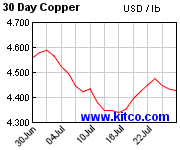
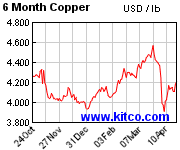
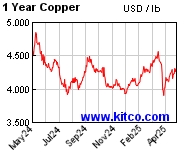
.

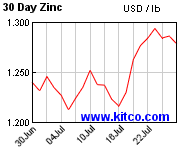
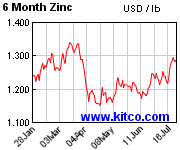
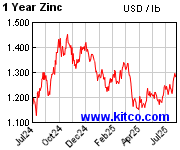
.

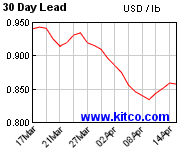
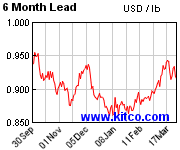
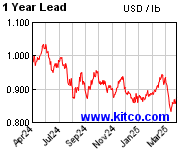
.
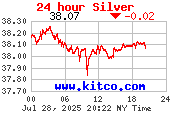
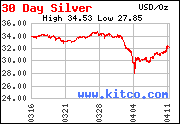
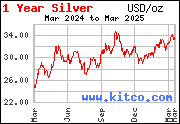
.
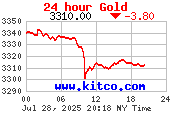
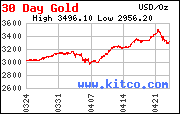
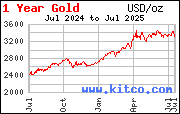
.
.




.




.




.



.



.
- Comodoro
- Mensajes: 980
- Registrado: Jue May 06, 2010 8:24 am
- Ubicación: LIMA
- admin
- Site Admin
- Mensajes: 165586
- Registrado: Mié Abr 21, 2010 9:02 pm
65 mensajes
• Página 1 de 5 • 1, 2, 3, 4, 5
¿Quién está conectado?
Usuarios navegando por este Foro: No hay usuarios registrados visitando el Foro y 20 invitados
